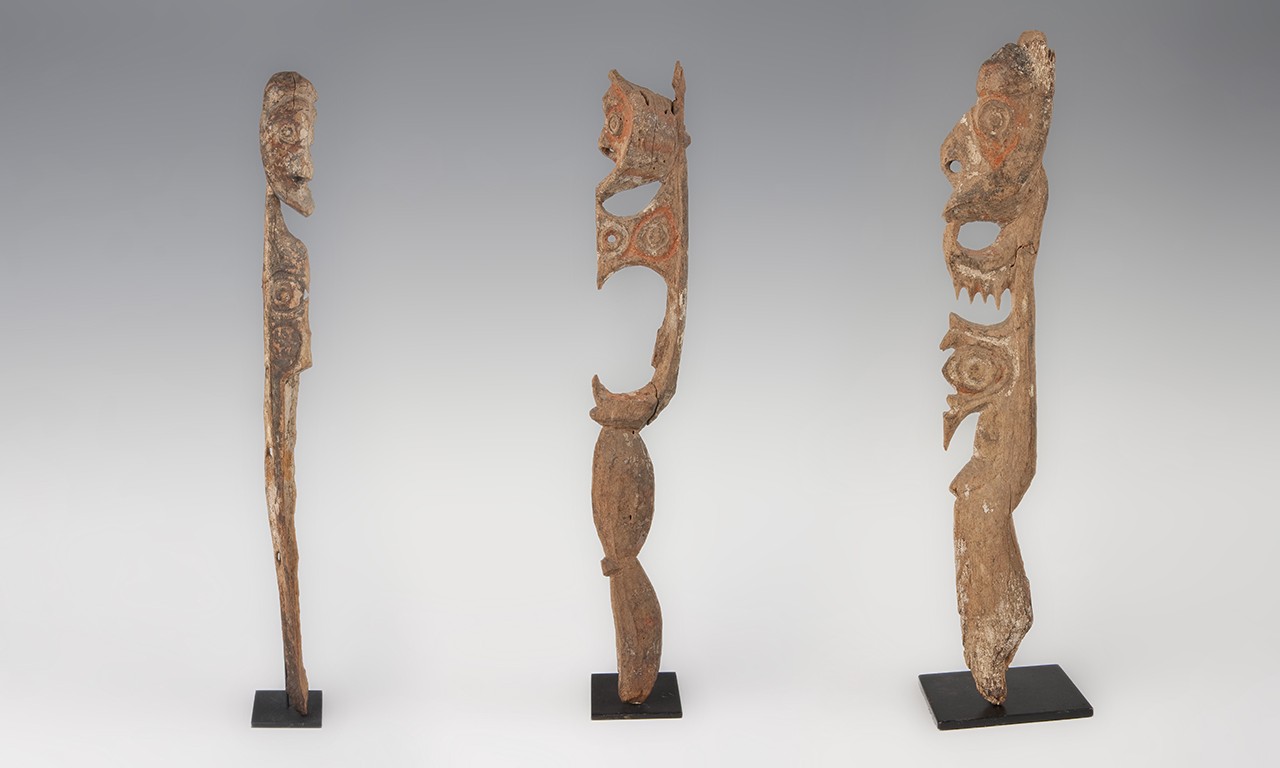 |
Cave Figure (Aripa), 1600-1800
Ewa culture; Karawari River area, Middle Sepik River region, East Sepik Province, Papua New Guinea, Melanesia
Wood and paint
F81.2.1-.3
Bowers Museum Foundation Acquisition Fund Purchase |
Subterranean Features and Foibles
Caves are notoriously dark, dank, cold, and dangerous—rife with pitfalls both literal and allegorical. There are several positive attributes of caves, however: their mouths are easily defensible and seem to naturally advise against explorations of their deeper reaches and, fundamental to this post, they are excellent storage centers. Many natural phenomena that cause objects to degrade over time like light, water and wind are either not present or are less present there, meaning that paintings and three-dimensional artifacts survive far beyond their usual lives when housed in caves. In the past we have already looked at how the Taíno culture of the Caribbean moved artifacts into caves to protect them from Europeans, this blog post explores how another cultural group on the opposite side of the globe used caves in both strikingly similar and unique ways.

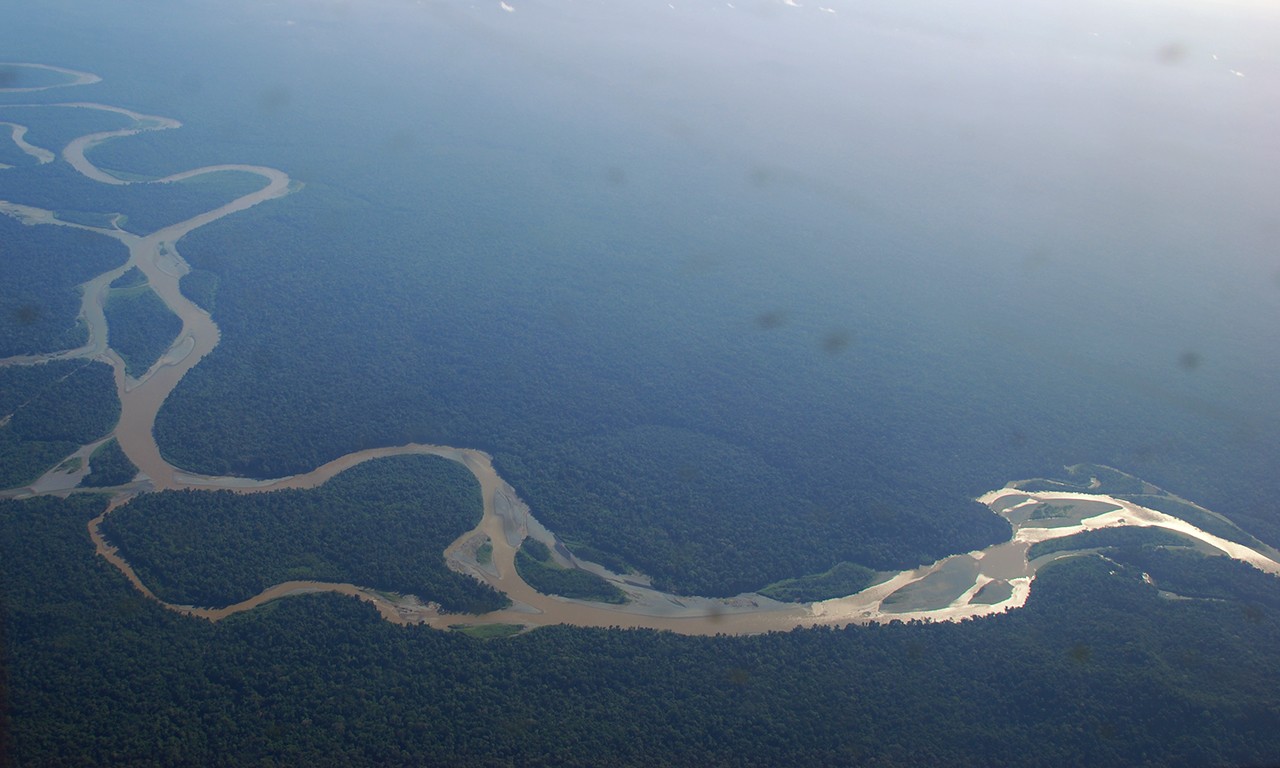 |
| An aerial shot of the East Sepik Province taken shortly after taking off from the Karawari River Region, August 2008. Taken by Roski-Keller-Martin Expedition. |
Finger Painting
The Karawari River is one of the major tributaries that leads into Papua New Guinea’s rambling Sepik River. The larger area is an expansive basin of branching waterways whose unnavigable terrain created the most linguistically diverse region of the most linguistically diverse island on the planet. Several cultures live along the Karawari and nearby rivers, in the adjacent lowlands, and the slopes of the nearby mountains. Along the Karawari’s upper reaches are as many as 300 caves and significant rock outcroppings, each of which has at least some evidence of human habitation. For many of these this involves paintings made from ochre, in many cases handprints created by spitting a mouthful of the earthy pigment onto ones outstretched arm—incidentally almost identical paintings are found across the world. These caves also traditionally housed several types of wooden carvings.
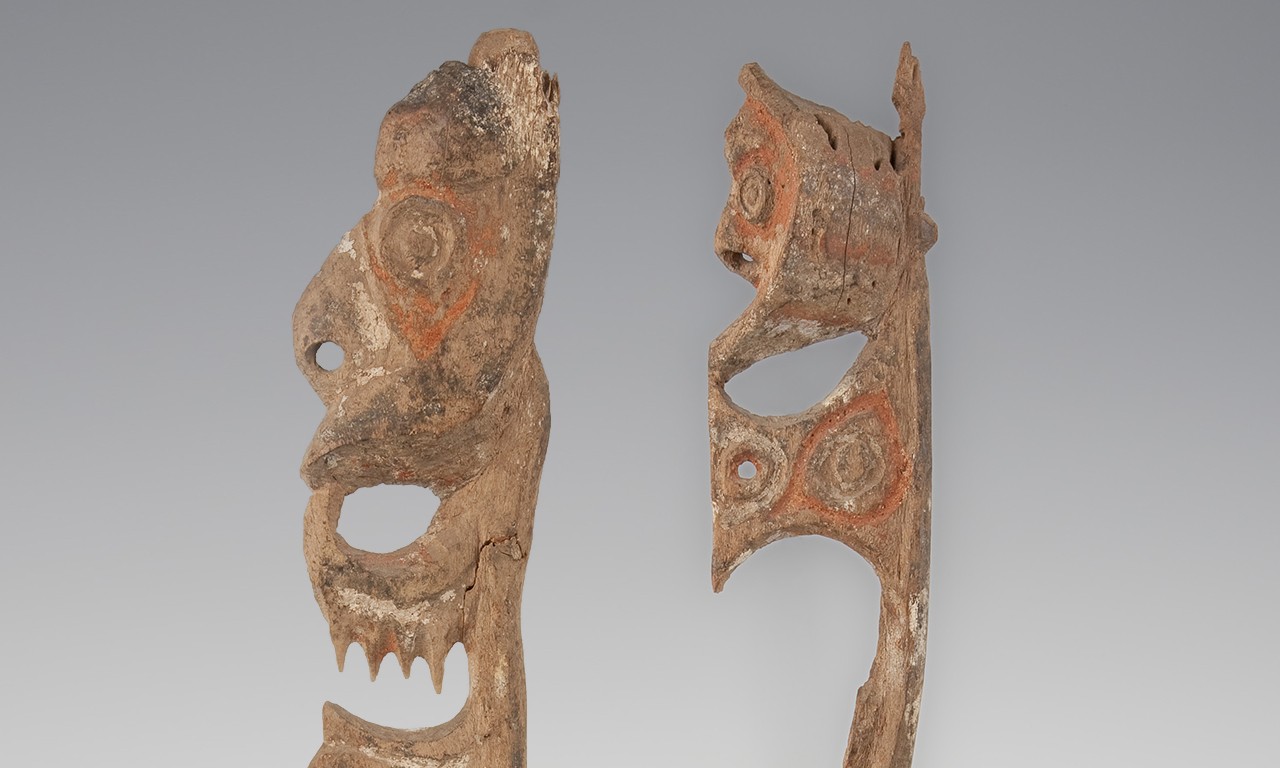 |
| Details of F81.2.1,.3 |
Help with the Hunt
The oldest Karawari cave figures are approximately 400 to 200 years old and may be some of earliest existing wood carvings from Melanesia. They tell an important story about the Ewa culture who created them. These figures represent Aripa, who served as a connection between Ewa men and spirits who helped them with hunting. Other figures represent legendary female ancestors who founded the Ewa’s village clans. These figures generally lived in spirit houses where they were activated through incantations and magical practices. When the owner of a figure died, the carving was moved to the caves where it served as a memorial. This practice shielded the cave figures from harsh environmental factors, offered protection for the memorial, and preserved the craftsmanship and ceremonial tradition of the Ewa people for future generations. Remains of paints like what was used for cave painting can still be seen on this archaic sculpture.

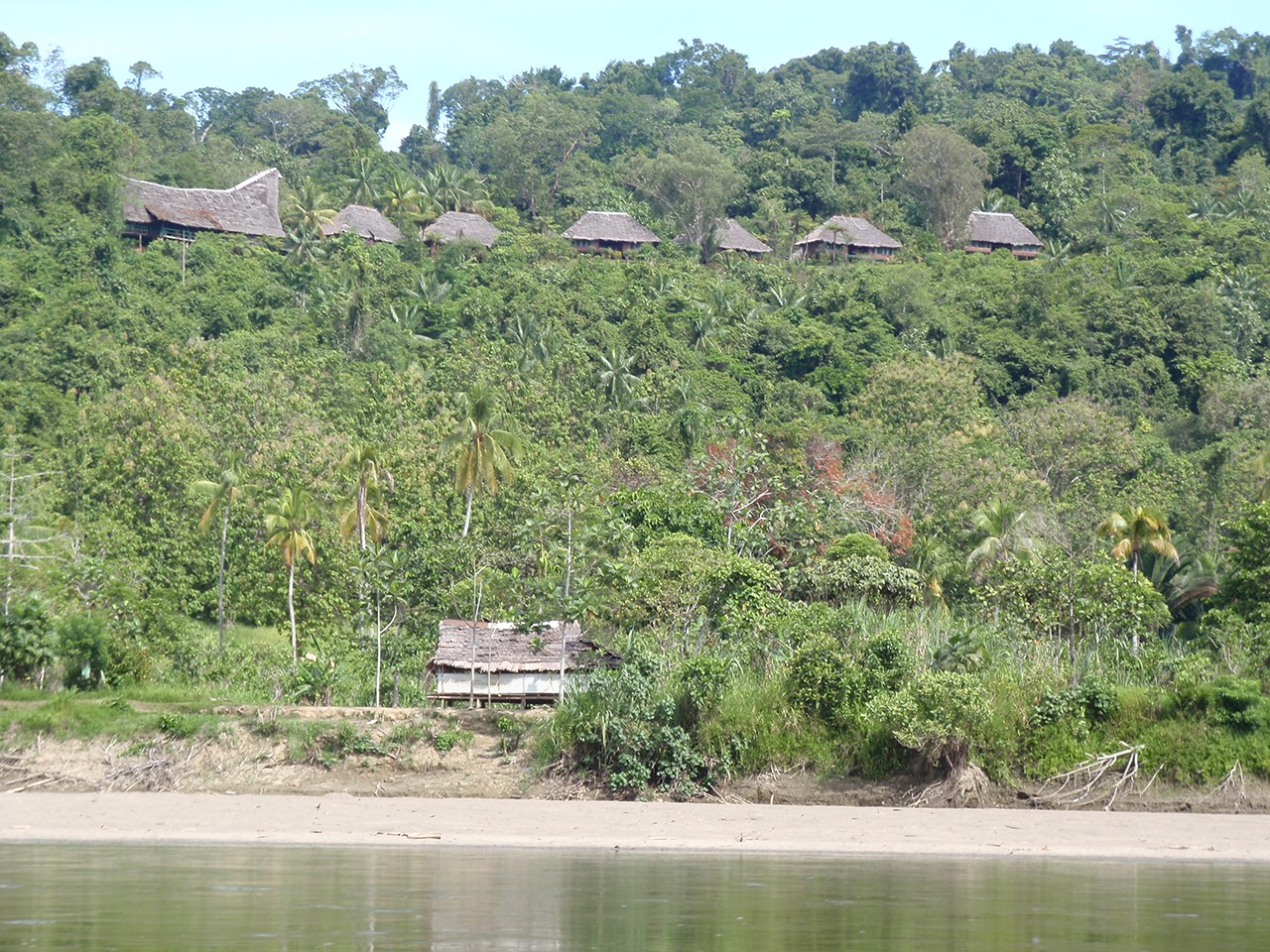 |
| A village along the Karawari River, August 2008. Taken by Roski-Keller-Martin Expedition. |
Preserving Life and Heritage
Though cave paintings and the use of caves as storage and sacred spaces date back long before outsiders began to explore and colonize inland Papua New Guinea, the intensifying 20th century battle for the cultural groups of the Karawari River Region to preserve their lives and cultural patrimony often involved relying on their secret caves. The region was technically part of German New Guinea from 1884 to 1914 when it was taken over by Australia. In the early years this meant relatively little oversight but the Japanese invasion of the island during World War II was a turning point. To avoid brutality from Japanese soldiers, many Karawari River Region peoples escaped to nearby caves. Following the war there was a more dedicated effort by the Australian government to police even remote areas of the country. Along with increased external governance came Christian missionaries who were rarely interested in preserving the animistic ritual objects of the region. At least one account describes almost every object in a men’s spirit house being burned at the command of missionaries. One man was lucky to sneak a sacred bamboo pipe to a nearby cave.

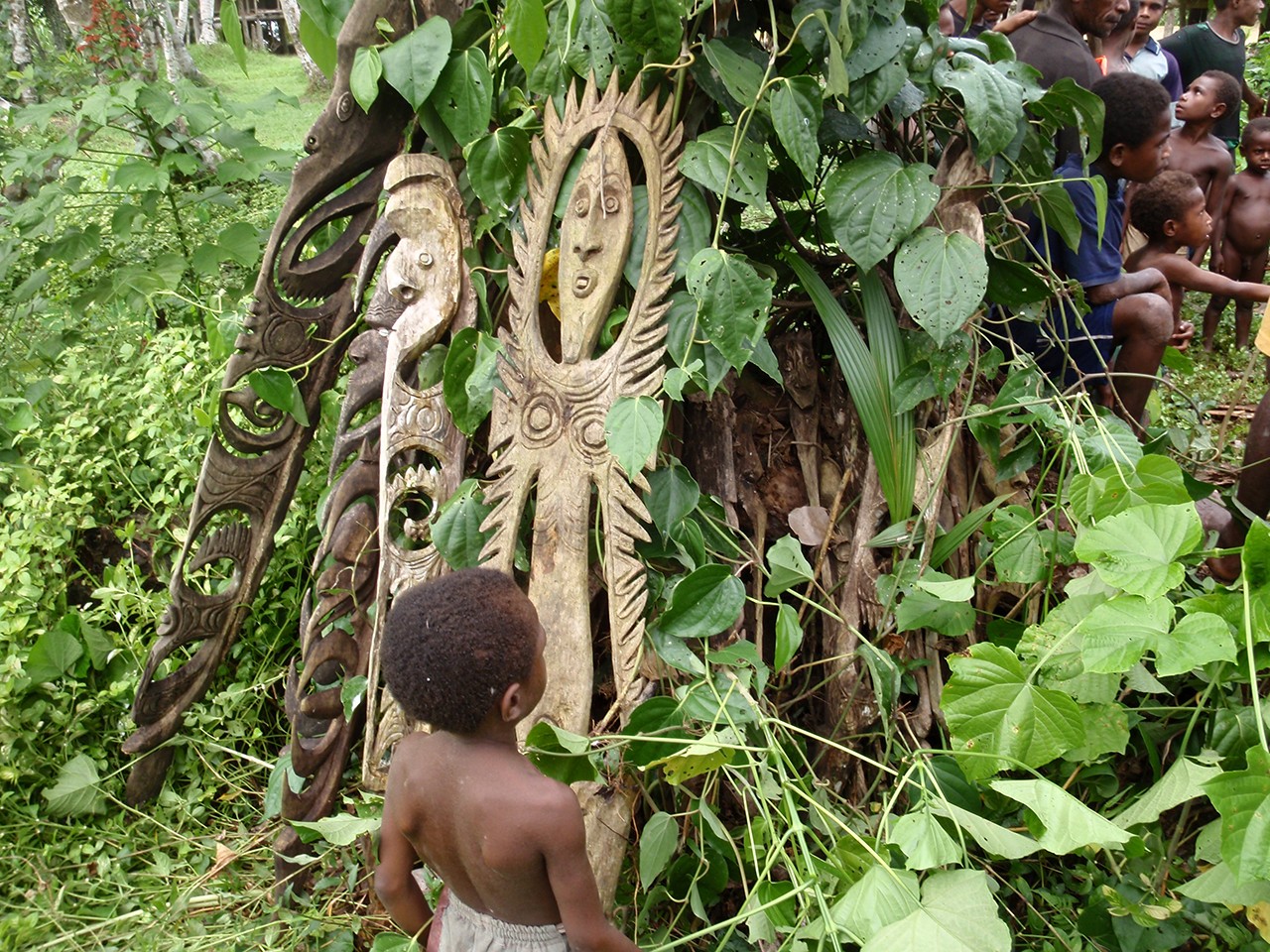 |
| A young boy in a village along the Karawari River looking at woodcarvings similar to what were traditionally housed in caves, August 2008. Taken by Roski-Keller-Martin Expedition. |
Modern Legacy
The conversion of large numbers of Papuans to Christianity meant that their ancestral woodcarvings lost their spiritual value. In the 1960s the first anthropologists and collectors entered the region looking to bring artifacts back to museums. In most cases sculptures were sold for five dollars or less. The Bowers Aripa figures were collected by George Clayton Kennedy, who was a geophysicist working at the University of California, Los Angeles and who collected in the Sepik Basin during this period. In the past two decades groups have started working with the peoples of the Karawari River Region to protect the carvings that remain in Papua New Guinea and better-control access to the region’s caves.
Text and images may be under copyright. Please contact Collection Department for permission to use. References are available on request. Information subject to change upon further research.







Comments